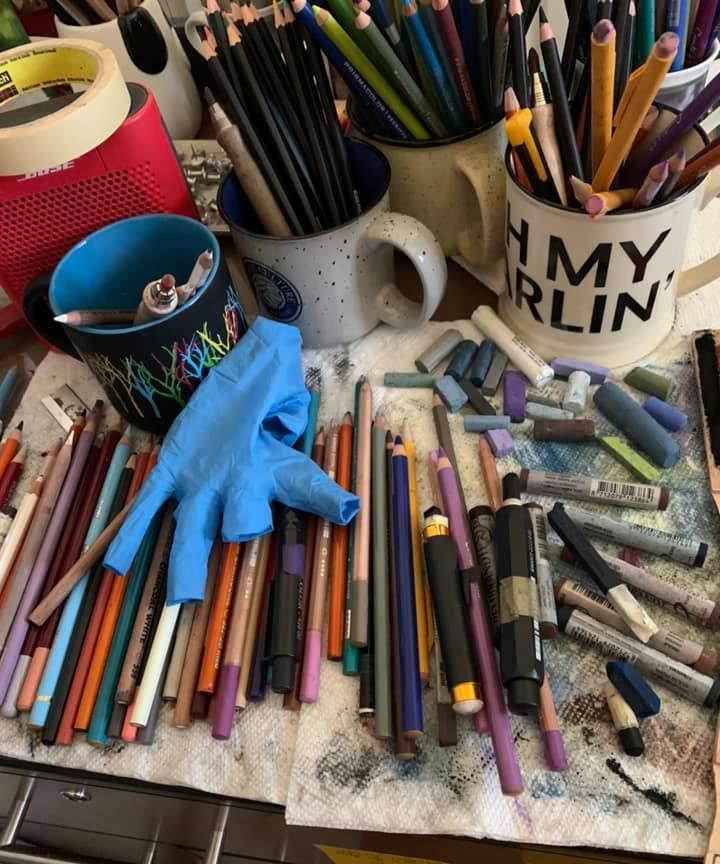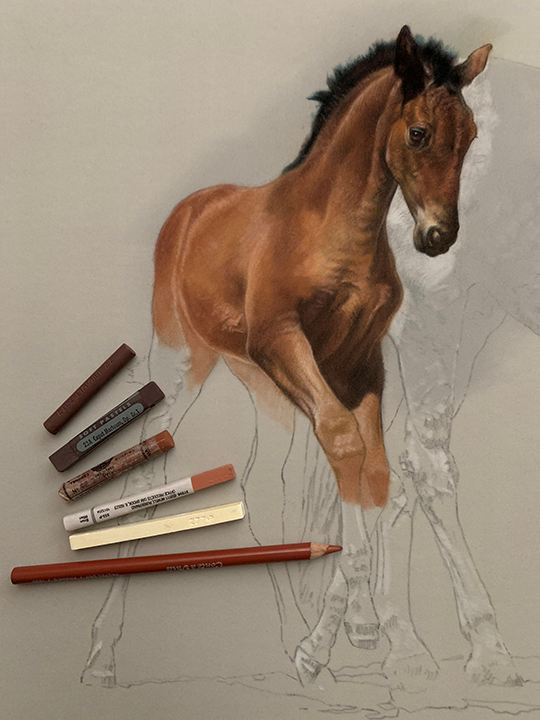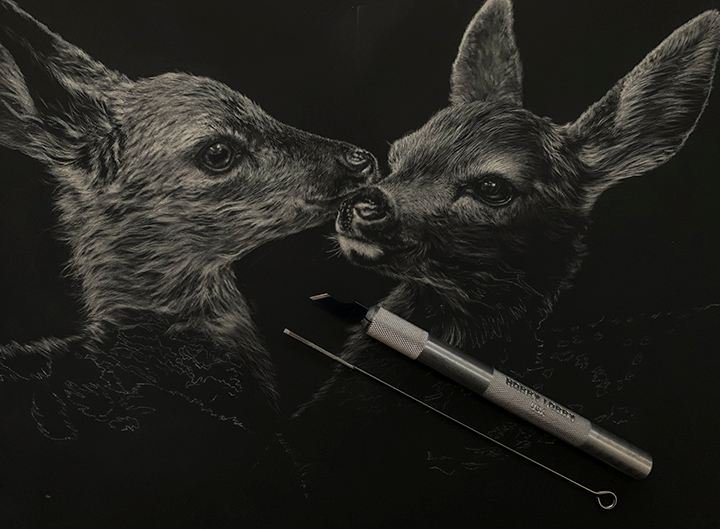The Art
I think the reason I'm attracted to these two art mediums, no...I think the reason I am absolutely PASSIONATE about these two is that they are so...tactile. I like to touch everything.
With pastels, you can feel the pigment come off of the pastel stick between your fingers, onto the paper. All that delicious color! It's vibrancy and the fact that it will never fade is because it is pure pigment.
And with Scratchboard, you actually hear the scratching noise as the xacto blade removes the black ink, one thin line at a time.
The pastel helps me with my craving for "softness" and the Scratchboard, my penchant for detail.
I like the immediacy of both mediums, their pureness and the fact that my hand and fingers are so close to the surface of what I'm creating. Maybe that's why I've never liked brushes?
The Pastel Medium
Pastel is pure pigment, the same pigment used in making all fine art paints. It is the most permanent of all media because it has no liquid binders that might cause it to darken, fade, yellow, crack or blister with time. Pastels from the 16th century exist today, as fresh as the day they were painted.
The name "Pastel" comes from the French word "pastiche" because the pure, powdered pigment is ground into a paste with a small amount of gum binder and then rolled into sticks. A particle of Pastel pigment, suspended in gum tragacanth seen under the microscope looks like a diamond with many facets. Therefore, Pastel paintings reflect light like a prism. No other medium has the same power of color or stability. Pastel doesn't oxidize with the passage of time.
Historically, Pastel can be traced back to the 16th century. Its invention is attributed to the German painter Johann Theile. Edgar Degas was the most prolific user of Pastel and one of its champions. His protege, Mary Cassatt, introduced Pastel to the Impressionists and her friends in the United States. In the spring of 1983, Sothebys sold at auction, two Degas Pastels for more than $3,000,000.00 each! Both Pastels were painted about 1880.
Today, Pastel paintings have the stature of oil and watercolor as a major fine art medium. Many of our most renowned living artists have distinguished themselves in Pastel and have enriched the artworld with this beautiful medium.
The Art of Scratchboard
Scratchboard came into being in the 19th Century in Great Britain and France. It became a popular method for reproduction, which was needed at the time, because it replaced wood, metal and linoleum engraving.
Scratchboard is now considered a fine art medium, displayed in galleries and museums all over the world.
The technique comes from using sharp instruments, such as xacto blades, tattoo needles, scalpel blades etc., for "scratching" into black India ink. The India ink has been coated on a white China clay hard board and the artist lifts off the darks to create a reverse process, by scratching away the black ink to show the white clay underneath.
The artwork can then be colored, if the artist chooses, with special paints, ink, colored pencil or watercolor. It is then sealed with varnish, so no glass is needed in the framing.


